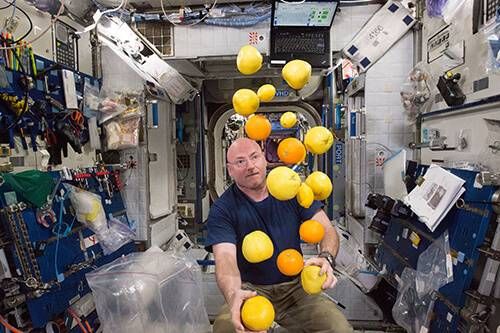Twin Brother Astronauts, Now on TV
A new PBS series documents a groundbreaking study of genetics and space travel
When NASA decided to test the effects of long-term spaceflight on the human body, the agency knew it had the ideal subject in 52-year-old Scott Kelly. Kelly was an experienced astronaut who had already flown three flights and spent more than 100 days in space. Even better, scientists knew just the person to compare him with when he returned to Earth: His twin brother, Mark.
Mark Kelly is also an astronaut, a veteran of four missions — and husband of former Congresswoman Gabby Giffords. For nearly a year, Mark Kelly, now retired, has watched from Earth as Scott took command of the International Space Station, an experience that has been documented in the two-part PBS series, A Year in Space (available for viewing here), adapted from Time Inc.'s digital coverage of the mission.
A Shared Mission
The study “offered a way for us to participate in a space flight together, which we never have done before," Scott told the Associated Press before his flight.
Scott Kelly left Earth on March 27, 2015, along with cosmonaut Mikhail Kornienko. He returned on March 1, 2016, the day before the TV series began airing. That makes him the first American to spend more than seven consecutive months in space.

Last October, he set another record, becoming the first American astronaut to spend a total of 382 days in space. But by the time Scott returns, he will shatter that record, spending a full 540 days in space. Mark, in contrast, has spent only 54 days in space. That creates an almost ideal scenario for scientifically comparing the brothers. Twins have the same genetic material at birth, but this changes over time and Scott's weightlessness could very well affect the pace of that change.
Keeping in Touch
On February 21, the Kellys celebrated their 52nd birthday — one on Earth, the other in space. “I call him much more when I'm in space than I do on earth,” Scott says of his brother in the show. “It's because you just feel like you're so far away you need to try maintain some kind of a connection.”
By identifying the physical effects of long-term space travel, NASA hopes to identify, and then address, whatever challenges astronauts might face on an eventual mission to Mars.
The second installment of A Year in Space, which will examine the effects of 12 months in space on Kelly's body, will air some time in 2017.

